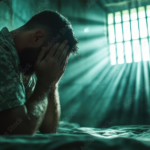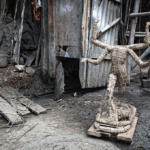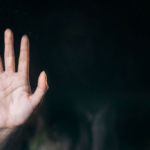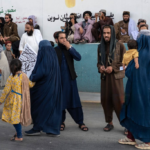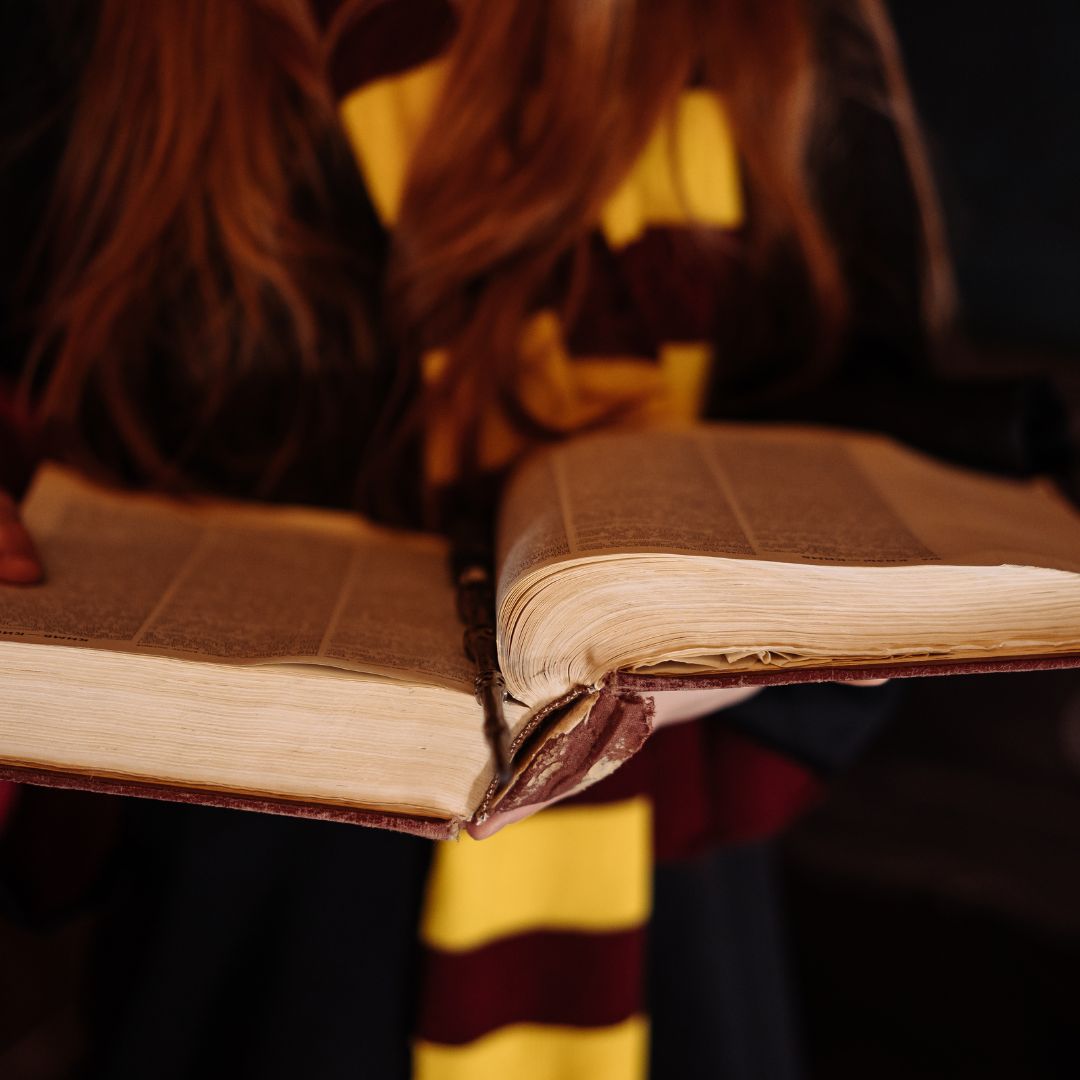This post has been written by Bilal Khan, a student of Christ University, Bengaluru.
Patriarchy and the Potterverse
Harry Potter has always been a nostalgic piece of Literature, at least for Gen Z. In this nostalgia, what we remember and do not is an issue to think about. For example, we might remember the horrifying transformation of Remus Lupin and the fight between him and Sirius Black. We might shed a tear or two for Snape’s secret. We might even get scared when Dumbledore shook Harry like a twig for competing in the Goblet trials. We then see a plethora of my memories constructed by the movies. What we do not see here is any mention of Hermione Granger or Ginny Weasley. No adventures other than intelligence do I remember from the series regarding Granger. And I am not implying these set of memories to be general in any form, but the Male presence in the Harry Potter movies is something we must acknowledge. It is not just presence but an overt presence that perpetually denies the screen for women. Also, this gendered analysis is being applied to the movie series.
The idols ....
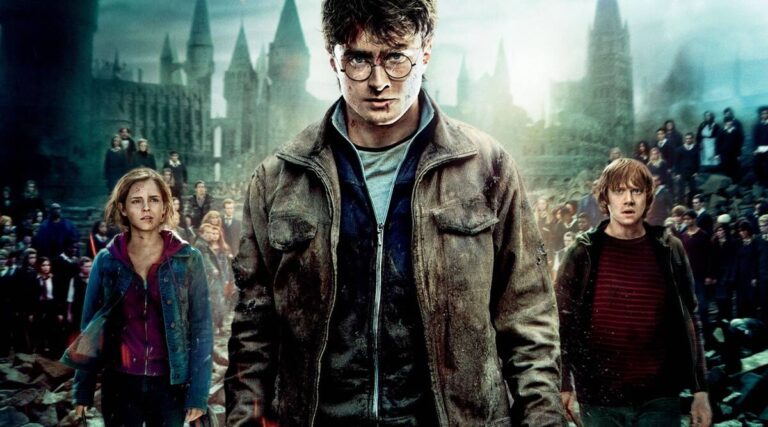
Throughout the series, we see Harry is not just supported but uplifted by many people. Within these people, we see a surge of male figures influencing him. Apart from influencing, they become so crucial for our protagonist that he idolises them.
In these idols, we see a noticeable absence of women; even when they are idolised, they are idolised for all the wrong reasons. Starting with Dumbledore, the wizard is not just known but is respected across the fantasy world. As the headmaster of Hogwarts, some would argue that the character was meant to be an idol. But on very similar levels (at least of stature and qualifications if not powers) is Professor Minerva McGonagall. We have other characters in the same criteria—like Gandalf from Lord of the Rings and Merlin in the legend of King Arthur.
What we see here is a pattern. If one was to read this trope through Jungian psychoanalysis, Dumbledore is a textbook example of the “Sage archetype”. The words usually associated with the wise-old-man (another name for the Sage) are father-figure and wisdom. The problem with the trope is that it is patriarchal and constantly reaffirms the disassociation of women with wisdom and knowledge. Even though McGonagall was a high-ranking professor, she barely resembles the same kind of powers as Dumbledore. The only bright part of my memory is her summoning gargoyles and forming a forcefield to protect Hogwarts.

The trope of male idols goes on even further in the series. Harry’s other mentors/idols include his Godfather Sirius Black, Alastor “Mad-Eye” Moody, Severus Snape, Rubeus Hagrid and Remus Lupin. Not one female professor in Hogwarts can be deemed as a mentor to Harry. If Harry has to lean on someone with more experience, then he will inevitably be a male character. Here, as well, we see a lack of representation of women.
The Mother-Figure
The most notorious representation of women in the media is solely to be a mother figure. The point of this representation can be highly covert and overt. Motherhood is a topic that is so ingrained in us as humans we don’t want to see the ideologies that come with it. I called it “notorious” for this particular reason.
Even if one starts from Hermione, you can see this motherhood trope. The central trio of Harry, Hermione and Ron is distributed with particular structures for them to act as and in. Harry, as the protagonist, is the brave hero who will end the absolute evil in most movies. Ron appears as familial support of the group with his comic relief and aloofness. Lastly, Hermione is portrayed as an academically excellent witch. But you might think, how would this trope be related to motherhood, right? With her academic strength comes her ability to protect the other two. This protection is visible in the first movie, The Sorcerer’s Stone. Hermione is seen fixing problems for Harry and Ron as a new student. Characteristics like protection are usually assigned to women in narrative cinema. And if this seems too far of a reach, have we all forgotten the ending frame of the Harry Potter series? The cute-cuddly goodbye to the series with Hermione and Ginny as mothers. A beautiful, bourgeoise see-off to the next generation of wizards.
Professor McGonagall, who I have already discussed concerning Dumbledore, is in some way destined to be compared to the headmaster. What McGonagall portrays is a Dumbledore in the sense of lack. On a psychosexual level, this lack can be that of the phallus—the counter of the overpowering Male figure. But speaking on more visible details, McGonagall presents a nurturing reaction to Harry Potter from the start. On the other hand, Dumbledore gives us cold reasoning and logic regarding Harry. But this male understanding of emotions is made not just visible but louder because of McGonagall’s overtly protective response to Harry. The movie series creates a binary between Dumbledore and McGonagall, much like every binary is discursive.
The Chosen One(s) in Harry Potter universe

Well, let’s acknowledge the elephant in the room—Voldemort. The problem with the Chosen One concept is that everything in the narrative is guided by circling them. Harry Potter and Lord Voldemort present each other’s counterparts. The problem with the binary is that it will always present itself as the central theme of the whole series. It is a closed rivalry that does not allow anyone else, but the men present on the screen. But the discourse becomes even more complicated when processes like identifications are involved. The idea of the male gaze given by Laura Mulvey stems from theories like identification, where gendered identification becomes not a trope but a condition of narrative cinema. By looking at extraordinary men, they become subjects for the spectators/audience to identify with.
Film critic Steve Neale in the context of masculine identification, writes:
…I want to examine the process of narcissistic identification in more detail. Inasmuch as films do involve gender identification, and inasmuch as current ideologies of masculinity involve so centrally notions and attitudes to do with aggression, power, and control, it seems to me that narcissism and narcissistic identification may be especially significant.
I mean, is it not understandable to be from Slytherin? To be the bad guy. To think you can also be the Chosen Man with authority to kill or save anyone? Neale calls this feeling narcissistic as it is heavily power-driven. But I am not suggesting this identification is wrong or right. The point is that a spectator of Harry Potter who identifies as a woman cannot be involved in the identification as the Chosen One.
Conclusion
I have ranted enough with a piece of Literature that we hold near and dear to our hearts. But again, we can always question the idea of nostalgia itself. Is the veil of nostalgia sometimes blinding us to the obvious out there? I mean, why are the most extraordinary houses in the Potterverse Gryffindor and Slytherin? The two places are named after male figures, unlike Hufflepuff and Ravenclaw. Hence, critical thinking and deconstruction are always around the corner for us to execute and apply.
- Ascriptive Identity Outweighs The Ability To Achieve
- Climate Change: The New Reality TV show
- Violence Against Women in Politics in Kenya is An Attack on Democracy
- The Hidden Heroes of Kumartuli: Women Idol Makers and Their Struggles
- Politics of Rape in India: An Altercation Between Justice and Power
- Pakistan faces condemnation for banning Pashtun Tahafuz Movement
- ‘Vice and Virtue’: Continued Codification of Women Right’s Violations in Afghanistan
- Lights Out: Letters I am Still Trying to Pen
- Hundreds protest in Paris in support of Iranian women’s human rights
- US Pledges Support to Boost Bangladesh’s Economic Growth and Opportunities
- Human Rights Groups Criticize Delay in NHRC Chairperson Appointment
- Ethnic Violence Reignites in Manipur: HRW calls for Unity and Protection Amid Rising Tensions
- Kerala Human Rights Commission Condemns Brutal Beating of Madrasa Student in Kannur
- Calcutta High Court Quashes Eviction Notice Against Priyadarshini Educational Society
- Study reveals that over 4.4 billion people worldwide cannot access safe drinking water
- Supreme Court Highlights Judicial Oversight in Criminal Cases Amidst Transition to New Legal Framework
- Karnataka High Court Grants Bail to accused in Tumakuru Assault Case
- UK has voiced increasing concerns regarding human rights abuses in Sri Lanka
- Uttarakhand High Court Grants Anticipatory Bail to accused in Assault Case
- Allahabad High Court Grants Conditional Relief in Abduction Case, Orders Age Determination Test
[arrow_forms id=’1117′]

